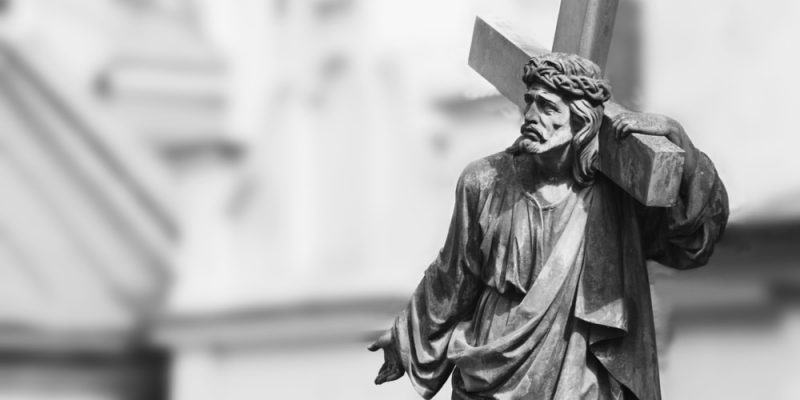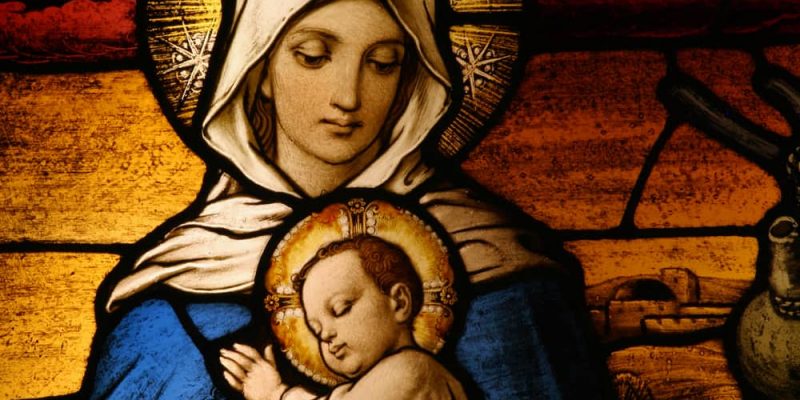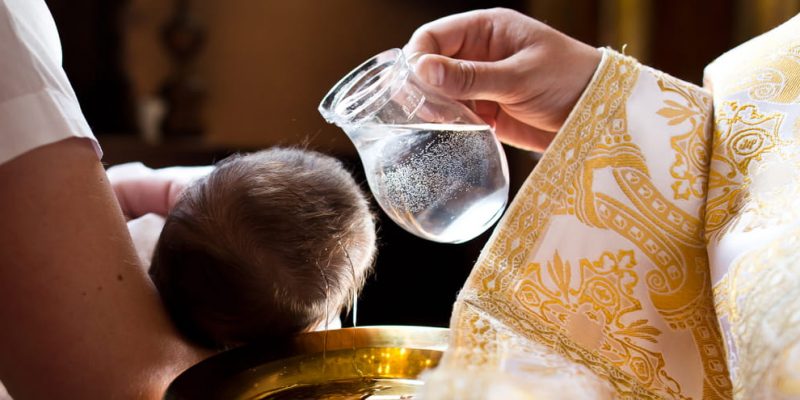We explain what Christianity is, its origin, beliefs and other characteristics. Also, its rituals and its relationship with Judaism.

What is Christianity?
Christianity is one of the three main religions monotheists of the world along with Islam and Judaism, with which it forms the so-called religions of the book, because they are based on their respective sacred books.
It was born in the Roman province of Judea, in the current State of Israel, but quickly spread to other regions, such as the Middle East, North Africa and Europe. Its influence on Western culture was decisive from the moment of its massification, especially when it became the official religion of the Roman Empire in the 4th century.
Christianity does not consist of a single religious community with a homogeneous doctrine, but rather It is made up of various branches, movements and churches, such as Catholicism, Protestantism and Orthodoxy. The faithful of all of them are called Christians and are governed by the teachings of Jesus of Nazareth, whom they consider the Messiah announced in the Old Testament, but they are differentiated by their doctrines, their liturgies and their institutional organization.
The term “Christian” comes from the Greek christianós and from latin christianuswith which those who professed faith in Christ were formerly named. In turn, Christ comes from KristósGreek translation of the Hebrew word Messiah, which in Jewish prophecies alluded to a coming descendant of David who would be the savior of the Jewish people. The translation of Messiah is “anointed,” since in Hebrew tradition kings were anointed with oil.
The word Christ was used to identify the Jewish preacher Jesus of Nazareth as Messiah considered by his disciples as the son of God, and later gave rise to the name Jesus Christ. According to the Acts of the Apostles (11:25-26), which make up the New Testament of the Christian Bible, his followers began calling themselves “Christians” in Antioch in the mid-1st century.
Christianity is today the largest religion in the world with approximately 2.5 billion faithful in different countries. It is the dominant religion in the West and has a strong presence on all continents. Its importance is such that the supposed year of the birth of Jesus Christ is used as a reference to order historical time in “before Christ” (BC) and “after Christ” (AD), sometimes expressed as “before our era” (ane) or “before the common era” (bce) and “of the common era” (ec).
It is an Abrahamic religion that is, it recognizes the religious tradition associated with the patriarch Abraham, which links it to Judaism and Islam, as well as to less numerous religions such as Baha'ism.
Key points
- Christianity is one of the main monotheistic religions in the world, along with Islam and Judaism, and has the largest number of followers (2.5 billion).
- It emerged in Judea in the 1st century, became the official religion of the Roman Empire in the 4th century and spread throughout the world.
- It is based on the belief in Jesus Christ, considered the Messiah and the Son of God, who according to biblical texts preached love of neighbor, died on the cross to free humanity from sin and was resurrected on the third day.
- It has three branches or main currents: Catholicism (which responds to the authority of the pope), Orthodoxy (separated from Catholicism in 1054) and Protestantism (separated from Catholicism in the 16th century).
- Their holy book is the Bible, which consists of the Old Testament (coincident with the Hebrew Bible) and the New Testament.
See also: Religious knowledge
Characteristics of Christianity
In general, Christianity is characterized by the following:
- It is a monotheistic religion (believes in the existence of a single god), Abrahamic (is recognized in the tradition of the prophet Abraham, like Judaism and Islam) and has Jewish roots.
- Its main figure is Jesus of Nazareth or Jesus Christ considered the Messiah and the son of God. He was sent to renew the sacred pact between humanity and its creator, spread the teachings of love for God and neighbor, and sacrifice himself on the cross to cleanse the sins of human beings (and thus ensure their eternal salvation).
- Its main religious symbol is the cross which in some cases takes the form of a crucifix, because, according to the New Testament, Jesus Christ died crucified by the Romans. There are some minority variants of Christianity that choose not to use the cross as a symbol.
- His holy book is the Bible which covers the Old Testament (which corresponds to the texts of the Hebrew Bible or Tanakh) and the New Testament (which recounts the life, death, resurrection and teachings of Jesus Christ).
- Their worship is organized in churches and communities They have different interpretations of sacred texts and carry out different ritual practices, but they agree on the fundamental core of their doctrine, based on the belief in the resurrection of Jesus Christ. The main ones are Catholicism, Protestantism and Orthodoxy.
- It is the religion with the most followers in the world and has much cultural and historical importance in the West and other regions. It decisively influenced medieval and modern thought, was the protagonist of political and military conflicts at different times in history and regulated many social and cultural practices that, in some cases, survive today, especially in Europe and America.
Origin of Christianity
Christianity was born in the Roman province of Judea as a small Jewish sect of apocalyptic beliefs made up of around a hundred members, guided by some of the apostles of Jesus of Nazareth. The events narrated in the Acts of the Apostles of the New Testament relate the founding of the first Christian communities in Jerusalem and other cities of the Roman Empire throughout the first century.
According to the Acts of the Apostles, this process was carried out by figures such as Peter, James and Paul of Tarsus, the latter responsible for spreading the Christian faith among the Gentile (that is, non-Jewish) populations. However, this book has a religious function and, therefore, the events it narrates are not necessarily rigorous from a historical point of view.
In the second century, Christian doctrine began to be organized based on the work of the so-called Fathers of the Church, and By the 3rd century the Christian cult already had thousands of followers especially in the north of the Mediterranean (with a presence in the city of Rome). By then, it can be said that an early Christian Church, composed of Jews and Gentiles, had emerged. Its relevance was such that the Roman rulers began a policy of religious persecution against Christians, but they were unable to appease the movement.
However, In the 4th century the Roman emperor Constantine I decreed freedom of worship. This measure ended the persecution of Christians and allowed the Church to expand further and hold its first ecumenical councils. In these councils, bishops and other ecclesiastical authorities dealt with theological matters in order to unify doctrines. Although this was followed by a period of resurgence of paganism (during the reign of Julian, called “the Apostate” by Christians), at the end of the 4th century the emperor Theodosius I declared Christianity the official religion of the Roman Empire.
Christianity beliefs

The practices and doctrines of Christianity vary between one of its branches and another, but its core of fundamental beliefs can be summarized as follows:
- The world was created by one almighty God as described in the Old Testament texts. Since then, there were numerous prophets who spread the sacred word, and the last of them was Jesus of Nazareth, who preached about the love and goodness of God.
- Jesus Christ is the Messiah that is, God's anointed on Earth, his sent, who had been announced in the prophecies of the Old Testament. At the same time, Jesus Christ is the son of God and his way of becoming flesh, that is, of becoming human and suffering the sufferings of humanity. He was born of a virgin woman, Mary, by the work and grace of the Holy Spirit. He died crucified at the age of 33, which involved a sacrifice to free humanity from its sins and renew its covenant with God.
- On the third day after his death, Jesus Christ was resurrected appeared to his disciples and subsequently ascended to heaven, where he sat at the right hand of God. Since then, the faithful have waited for his second coming, which will mark the end of time and the arrival of the final judgment, in which the dead will be resurrected and judged. The good and faithful will enter the kingdom of God, and the bad and unfaithful will go to a place of eternal punishment, hell.
- The Father, the Son and the Holy Spirit make up the Holy Trinity which in most Christian doctrines means that God is one but manifests in three persons: the creator Father (God), the Son incarnated to save humanity from sin (Jesus Christ) and the Holy Spirit, who illuminates believers on their path to eternal life.
Branches of Christianity

Christianity encompasses three main branches:
- Catholicism or the Catholic Church. It is the largest branch of Christianity and includes 24 churches (the Latin Church and the Eastern or Uniate churches), which are under the authority of the Pope, located in Vatican City. Its doctrine is based not only on the figure of Jesus Christ, but also on the Virgin Mary and an extensive group of Christian saints and martyrs. It has about 1.39 billion followers around the world.
- Orthodoxy or the Orthodox Church. Its full name is the Orthodox Apostolic Catholic Church and it is considered the heir to Christianity in the eastern half of the Roman Empire. It groups 15 autocephalous churches and several autonomous churches, which have their own authorities but share the same doctrine and recognize the Patriarch of Constantinople as honorary leader. Orthodoxy separated from the Catholic Church during the East-West Schism in 1054, and today it has around 300 million followers worldwide.
- Protestantism or Protestant churches and movements. Protestantism was born in the 16th century with the so-called Protestant Reformation, initiated by Martin Luther (1483-1546). This reform broke with many of the precepts of Catholicism, especially with the idea of the infallibility of the pope, whose authority they decided not to recognize. Thus, different Protestant churches and movements were born that, although they remain faithful to Christianity, interpret it in a different way from Catholic doctrine, since they defend a return to primitive Christianity and promote the doctrine of salvation by faith. The main Protestant churches and movements are: the Anglican Church, Lutheran churches, Evangelical churches, Pentecostal churches, Baptist churches and Restorationist churches. In total, Protestantism has about 800 million followers around the world.
Christian rites

Christian rites can vary greatly, depending on the Christian church in which they are practiced. However, some are shared by all or most Christian communities, although not necessarily in the same way. For example:
- The baptism It is the rite or sacrament of initiation into the Christian faith, generally carried out in childhood. It consists of pouring water over the head or completely submerging the person who is admitted as a Christian, similar to the initiation rite that John the Baptist performed in the Jordan River and with which Jesus had been baptized, according to Christian tradition. It is considered that the water of baptism cleanses the baptized person from original sin, who is thus spiritually reborn and prepared for the covenant with God.
- the mass. It is a weekly meeting in which the Christian liturgy takes place, on specific days and times according to the content to be read and the events to be commemorated. The main masses are those celebrated on Sundays (considered the Lord's Day) and those that correspond to important dates for the Christian religion, such as the birth of Christ (the vigil and Christmas masses on December 24 and 25, or January 6 and 7 in the Orthodox Church) and the resurrection (the Easter Sunday mass). In some cases, daily masses are also celebrated.
- The Eucharist or Communion. It is the rite or sacrament of voluntary acceptance of the body and blood of Christ, which according to some theologies are manifested in the bread and wine consumed at the end of mass. In the Catholic Church, an important event is celebrated, known as first communion, which consists of the first participation of young Christians in the sacrament of the Eucharist. This sacrament is followed by confirmation, which involves the full integration of the individual into the Christian community.
- Confession and penance. Practiced in Catholicism and Orthodoxy, they consist of the faithful narrating their own sins to a confessing priest, so that the priest can absolve them and guide them spiritually towards God's forgiveness through the imposition of a penance.
Christianity and Judaism
Christianity has its roots in Judaism, so both religions are related, although they do not have the same beliefs or rituals. Fundamentally, Jews maintain their tradition based on the books of the Hebrew Bible (called Old Testament by Christians), and do not accept the doctrine of the New Testament, since do not consider Jesus of Nazareth as the Messiah and the son of God.
Because they do not believe that Jesus is the anointed one, Jews continue to wait for the arrival of the Messiah and the fulfillment of the prophecies announced in the Old Testament, and they preserve many of the ancient rituals.
In the case of Islam, also an Abrahamic religion, Jesus of Nazareth is considered one of the prophets who preceded Muhammad (the founder and chief prophet of Islam), but he is not identified as the son of God.
References
- Chadwick, H., & Evans, G.R. (1994). Christianity. Twenty centuries of history. Folio.
- Filoramo, G., Massenzio, M., Raveri, M., & Scarpi, P. (2000). History of religions. Criticism.
- Johnson, P. (2017). The history of Christianity. Editions B.
- Wainwright, G. et al. (2024). Christianity. Encyclopedia Britannica. https://www.britannica.com/





